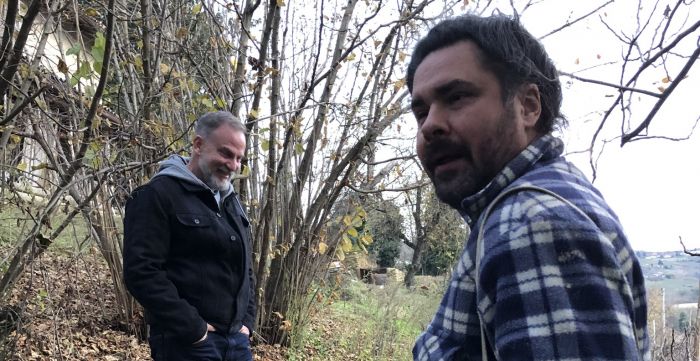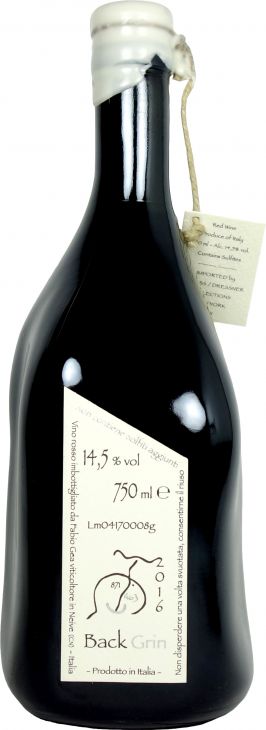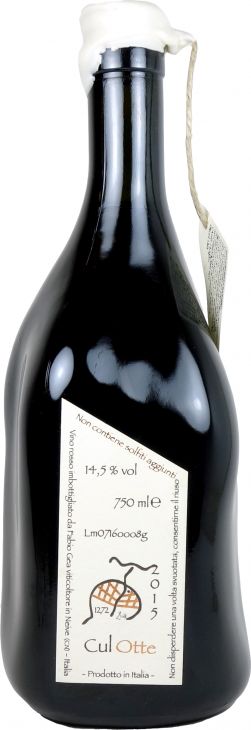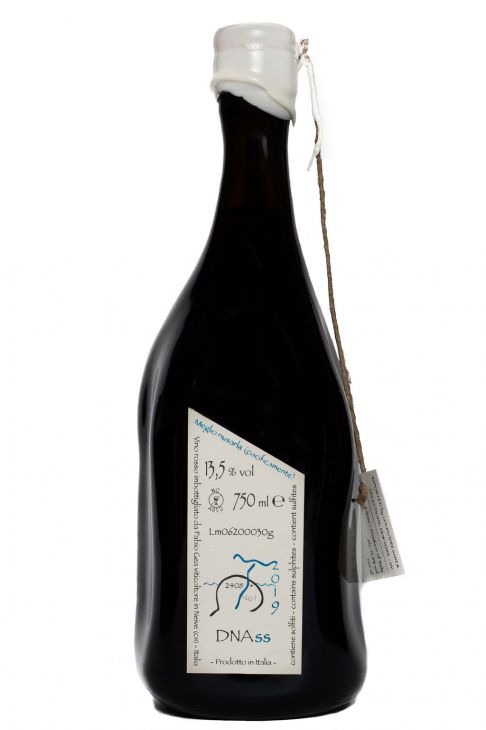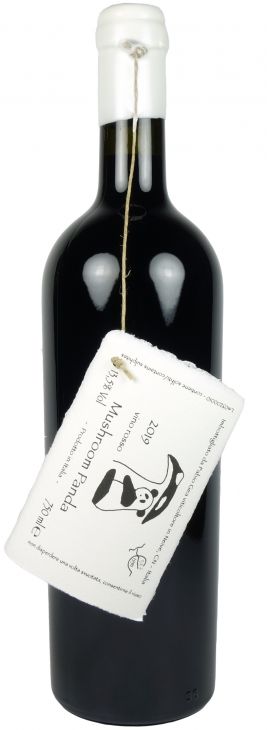producer profile
10.06.2019
Fabio Gea Profile
Fabio Gea Producer Profile
Read more…
producer profile
<p>With our special knack for finding new winemakers who have converted their lives from one of slavery to Mammon, God of Money, to that of slavery to Bacchus, God of Wine, we've run smack-dab against one of the craziest, funny, "uh-oh" and provocative winemakers we've ever met.</p>
<p>His name is Fabio Gea and he is making delicious wines from small <glossary title="760">parcels </glossary>in <span class="zalup"><span><glossary title="137">Barbaresco</glossary><span>.</span></span></span> The land comes from his maternal grandfather Pòtu, (diminutive for Giuseppe in dialect) and is centered around different parts of <span class="zalup"><span><glossary title="137">Barbaresco</glossary><span>,</span></span></span> mostly near the <span class="zalup"><span><glossary title="196">Bricco</glossary><span>.</span></span></span> During his grandfather's time, the vines were still in <span class="zalup"><span><glossary title="815">polyculture</glossary><span>,</span></span></span> although he was apparently an expert <glossary title="">grafter </glossary>who at one time had over 200 grape <glossary title="1071">varieties</glossary> on his land. But the winemaking and vineyard care skipped a generation and most of the <glossary title="1133">plots </glossary>became semi-abandoned. Fabio, after receiving his doctorate and working as a successful geologist for corporate companies for a number of years, decided to leave that world and reprise the family winemaking tradition. He also started bringing the vineyards back into shape. <br />
<br />
The whole enterprise is a few lines of <glossary title="709">Nebbiolo </glossary>inside and outside of the <glossary title="137">Barbaresco </glossary>designation, as well as small patches of <glossary title="398">Dolcetto </glossary>and <span class="zalup"><span><glossary title="138">Barbera </glossary><span>-</span></span></span> in total 0.9 <glossary title="523">hectare</glossary> from family land and some additional plots he's been able to rent. All vineyard work is done by hand, with minimal <glossary title="328">treatments</glossary> of only <glossary term="Copper" title="333">copper</glossary><glossary title="333"> </glossary>and <span class="zalup"><span><glossary title="993">sulfur</glossary><span>.</span></span></span> In the <span class="zalup"><span><glossary title="254">cellar</glossary><span>,</span></span></span> apart from experiments in "toilet" (Gea has crafted his own porcelain <span class="zalup"><span><glossary title="103">amphoras</glossary><span>,</span></span></span> certainly a first as far as we are concerned), he uses older <glossary title="142">barrels</glossary> of 440 liters and 500 liters, glass and<font color="#7b143e"><strong> <glossary term="Stainless Steel" title="986">stainless steel</glossary></strong></font>. The total production is around 5000 bottles a year of 18 different wines. Some wines are traditional, others definitely outside-the-box.<br />
<br />
La Msoira e'L Rastel is is the titular name of the <span class="zalup"><span><glossary title="427">estate</glossary><span>.</span></span></span> It is represented in the symbol on the bottle and means "The Sickle and the Rake" in <glossary title="1134">Piemontese </glossary>dialect.</p>
<p><img src="http://louisdressner.com/uploads/images/article/2019_Jun_10//7c/7f/7c7fe50e88be069aaad82e60163106c2.jpg" /></p>
<p>This symbol can be interpreted many ways according to Fabio. First, it obviously represents the tools of the <span class="zalup"><span><glossary title="329">contadine</glossary><span>,</span></span></span> the <span class="zalup"><span><glossary title="769">peasants</glossary><span>.</span></span></span> It is also a reference to the leftist symbols of the scythe and hammer, but if you look it could also be a corkscrew going into a <span class="zalup"><span><glossary title="336">cork</glossary><span>,</span></span></span> or, if you look another way, something that is best left to the lewder side of the imagination. Within the symbol is the number of the bottle and the total number of bottles hand written on <glossary term="Wine Label" title="573">labels </glossary>made from handmade paper. It's one of the reasons the price is high, but it is part of Fabio's vision to make the <glossary title="427">estate</glossary> truly <glossary title="122">artisanal </glossary>in all aspects. Including <glossary title="">wood</glossary> from <glossary title="142">barrels </glossary>whose <glossary title="987">staves </glossary>were cured in a sauna using <glossary title="1117">volcanic</glossary> rock. No shit!</p>
<p>Other interesting facts: </p>
<p>-The <glossary title="573">labels</glossary> kindly ask you to consider not throwing away the bottle and to re-use it. The handmade paper intentionally comes off easily for re-use. </p>
<p> -Some wines don't even have <glossary title="573">labels</glossary> at all, but rather a little piece of paper dangling off a string from the neck of the bottle.</p>
<p>-There is an elaborate code on each label. Let's use, for example, "Mushroom Panda".</p>
<p><img src="http://louisdressner.com/uploads/images/article/2020_Apr_19//77/25/772599e98cd17e5296a894e404f8bf29.jpg" /></p>
<p>Let's say the code is <strong>Lm07140008 </strong>(we know it doesn't match)<strong>.</strong></p>
<p>1st Position <strong>L</strong> = lot<br />
<br />
2nd Position <strong>m</strong> = <u>m</u>oderno = machine <glossary title="378">destemmer</glossary><br />
<em>other possibilities:</em> <strong>M</strong> = <u>M</u>anuale = <span class="zalup"><span> <glossary title="520">hand harvesting</glossary><span>,</span></span></span><br />
<em>or</em> <strong>t</strong> = <u>t</u>radizonale = <span class="zalup"><span> <glossary term="Foot-Treading" title="458">foot trod</glossary><span>,</span></span></span> often manually <glossary title="378">destemmed</glossary><br />
<br />
3rd, 4th, 5th, 6th Position <strong>0714</strong> = month and year of <glossary title="185">bottling</glossary><br />
<br />
7th, 8th Position <strong>00</strong> = months of <glossary title="142">barrel</glossary> <glossary title="74">aging</glossary><br />
<br />
9th, 10th Position <strong>08</strong> = total <glossary title="993">sulfur</glossary> at <glossary title="185">bottling</glossary> in mg/L<br />
<br />
Optionally, 11th Position <strong>g</strong> = mainly <glossary title="910">sandstone</glossary> (grès) <glossary title="103">anfora</glossary> <glossary title="">aging</glossary><br />
<em>or</em> <strong>p</strong> = mainly porcelain (porcellana) <glossary title="103">anfora</glossary> <glossary title="74">aging</glossary><br />
<em>or</em> <strong>v</strong> = mainly <glossary title="387">demijohn</glossary> (vetro) <glossary title="74">aging</glossary></p>
<p>Let's do it again with "Back Grin". </p>
<p><img src="http://louisdressner.com/uploads/images/article/2020_Apr_19//91/bf/91bf0af90f57ce1504037871dadae983.jpg" /></p>
<p>Code:<strong> Lm08160009g</strong></p>
<p><br />
The wine comes from <glossary title="378">destemmed</glossary> grapes, was <glossary title="185">bottled</glossary> in August 2016, there is no <glossary term="Wood" title="1126">wood</glossary> <span class="zalup"><span><glossary term="Aging" title="74">aging</glossary><span>,</span></span></span> it has 9 gm/L of Total <glossary term="Sulfites" title="993">Sulfur</glossary> and it was mainly made in <glossary title="910">sandstone</glossary> <span class="zalup"><span><glossary title="103">anfora</glossary><span>.</span></span></span></p>
<p>Here are some tips from Fabio for enjoying his wines:</p>
<p>- "Falavosca" has to be stocked in vertical position until consumption (many <glossary term="Yeast" title="1128">yeasts</glossary> are at the bottom of the bottle and it should be drunk "opalescent", not "turbid"). This is a problem for some <glossary title="254">cellars</glossary> that have only the horizontal positions. You should look for a little space to lie the wines down. </p>
<p>- In general, all my bottles have a white paper around them: do not take it off because it preserves wine from the light and the natural paper <span class="zalup"><span><glossary title="573">labels</glossary><span>.</span></span></span></p>
<p>- All my wines (except "Falavosca") have a string with a hanging label: for opening my bottles, please take the hanging label in one hand and "throw up (pull up?)" the lace in order to break the <glossary title="">DOC</glossary> seal; then, it will be easier to undress the bottle neck from the cotton/line strip and the joined wax hat together. Some people love to uncork directly without "undressing" the bottles: the risk is to have residual wax in wine.</p>
